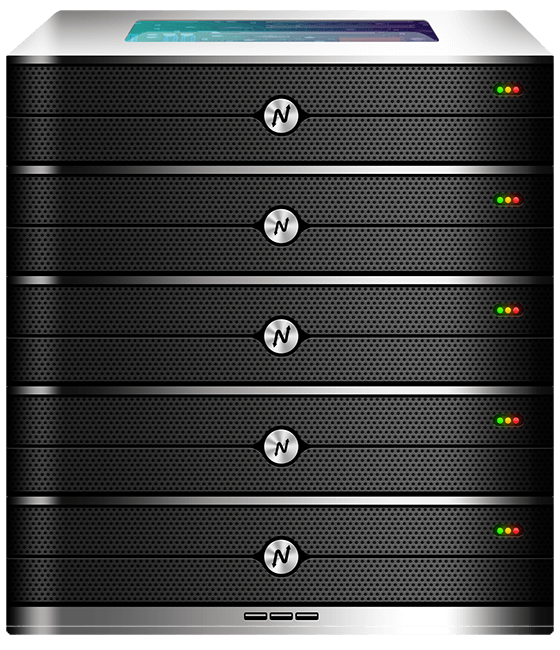Choosing between hosting vs domain is one of the first decisions for anyone building an online presence. These two terms are often used together but mean different things. A domain is your web address — the name people type in the browser. Hosting is the space on a server where your website files live. Getting this right matters for security, SEO, and long-term costs, especially for businesses serving regional or global audiences.
India’s hosting ecosystem has matured into a global-class option. Modern Indian data centers offer lower operating costs, strong peering for Asia, tightening security practices, and scalable options that suit startups and enterprises. In this article we explain hosting vs domain in plain language, walk you through how to pick both, compare Indian servers with other regions, show real-world use cases, and recommend XenaxCloud plans that match each stage of growth.
What does “hosting vs domain” actually mean?
When people talk about hosting vs domain they usually mean the difference between a website name and the place that stores the website. A domain is a human-friendly identifier, for example example.com. DNS maps that name to an IP address. Hosting is the server that stores HTML, images, databases, and other resources.
Domains are registered through domain registrars and are renewable assets you control. Hosting is a service you pay for monthly or annually and it provides bandwidth, CPU, storage, and software stacks such as PHP or Node. Both are required to make a public website, but they are managed separately. You can register a domain with one provider and host the site elsewhere. Understanding hosting vs domain helps you make better decisions about control, migration, and uptime.
For many small businesses, the simplest path is to register the domain and buy a hosting plan from the same provider, which simplifies DNS settings and support. For larger organizations, separating domain registration from hosting can add security and flexibility.

How to choose a domain
Choosing a domain is its own mini-strategy. Think of a domain as a brand asset: it should be memorable, short, and relevant. When evaluating domains, check for trademark issues, social handles, and previous ownership history.
Pick the right top-level domain. A .com remains globally recognized, while country-level TLDs such as .in can help local SEO in India. If your business serves multiple countries, consider registering multiple TLDs for brand protection.
When it comes to buying, verify privacy options, auto-renew settings, and DNS management capabilities. Managed DNS with features like quick TTL changes and DNSSEC enhances resilience. If you plan to swap hosts later, a registrar that supports EPP transfers makes the process smoother.
Finally, align domain choices with your hosting decisions. If you expect growth or need regulatory controls, make sure your registrar supports advanced features and that your hosting provider accepts custom DNS settings without lock-in.
How to choose hosting (practical steps) — connecting hosting vs domain
Choosing hosting complements the domain choice. When you evaluate hosting, ask three core questions: what traffic do I expect, what application will run (WordPress, custom app, eCommerce), and what level of support do I need.
For basic brochure sites, a shared hosting plan with cPanel is both cost-effective and easy to manage. For example, XenaxCloud’s Shared Hosting Silver — 1 Website, 15GB Storage, 100GB Bandwidth, $1.79 is a solid starting point for single-site publishers. If you manage several client sites, Shared Hosting Gold — 3 Websites, 25GB Storage, 500GB Bandwidth, $2.39 provides more headroom and control.
If your site is resource intensive, move to VPS for dedicated CPU and memory. KVM VPS 2 — 4 Vcore CPU, 16GB RAM, 50GB Storage, 4TB Bandwidth, $10.79 balances performance and cost for growing stores or web apps. For extreme performance needs, the Gold KVM VPS or higher Speed KVM packages provide extra cores and bandwidth.
When you register a domain and set up hosting, ensure DNS points correctly and that you enable SSL. Some providers include automated SSL issuance and DNS templates to simplify connecting your domain to hosting. If you prefer full control of DNS, register the domain with a registrar that allows custom nameservers and point those to your hosting provider.
- 1 Website Host
- 15GB SSD Storage
- 100GB Bandwidth
Hosting vs Domain: Speed, uptime, and security considerations
Understanding hosting vs domain helps you align expectations for speed, uptime, and security. The hosting environment determines how fast pages load and how often the site stays online. The domain and DNS configuration influence how quickly name resolution happens, which affects the perceived speed.
Speed: Hosting on SSD-backed servers with HTTP/2 or HTTP/3, and using a CDN, drastically reduces load times. For sites with audiences in Asia, hosting in India lowers round-trip times and improves speed for regional users. Use caching and optimized images to further reduce load.
Uptime: Hosting providers should offer clear SLAs. Redundant networks, multi-homed peering, and automatic failover matter far more than the registrar you choose. However, DNS configuration is also critical. Low TTL values allow quick failovers, but frequent DNS changes can cause propagation delays.
Security: Hosting secures OS patches, web application firewalls, and malware scanning. Domains require registrar-level protections like two-factor authentication and domain lock to prevent unauthorized transfers. Combine both by enabling registrar security and pairing with a host that provides regular backups and DDoS protection.
Comparison: Indian servers vs US, Canada, Germany, UAE
Below is an HTML comparison table focusing on latency, support, provisioning speed, and reliability — the factors that directly affect hosting vs domain decisions and operational performance.
| Region | Typical Latency to Asia | Support Availability | Provisioning Speed | Reliability & Uptime |
|---|---|---|---|---|
| India | 20–50ms | 24/7 local & global | Fast (minutes to hours) | Tier III/IV facilities, high |
| United States | 150–220ms | 24/7 but time-zone biased | Fast (hours) | High, enterprise-grade |
| Canada | 160–230ms | Business hours & global | Moderate | High |
| Germany | 140–200ms | Business hours & global | Moderate | High |
| UAE | 70–120ms | Regional with limited windows | Moderate | Growing, improving |
This technical comparison shows why hosting in India is often the best option for businesses with major audiences in Asia, while still supporting global reach through CDNs and multi-region configurations.
Real-world use cases: applying hosting vs domain decisions
Small local business: A neighborhood service provider can register a regional domain like example.in, host on Shared Hosting Silver, and rely on low latency for nearby customers. This keeps costs down while delivering good performance.
Multi-national eCommerce: A store selling globally should register a primary brand domain on .com and host on a VPS closer to their primary market, or use Indian hosting with a global CDN to balance cost and speed. KVM VPS 2 is often suitable for stores that need database performance.
Agency with multiple clients: Agencies benefit from reseller or multi-site shared plans and careful domain management. Register domains under a single account with strong security and use cPanel or WHM for client isolation.
SaaS or web app: Custom apps should avoid pooled shared hosting and start with a VPS for predictable CPU and memory. Use a registrar that allows quick DNS updates to support blue-green deployments and failovers.
These examples show how the hosting vs domain choice impacts architecture, migration plans, and long-term maintenance.
Scalability and migration: planning for growth
Scalability is part of the hosting vs domain conversation. Early on, buying a domain and starting on a shared hosting plan makes sense. Over time, vertical scaling to VPS provides more CPU and RAM. Horizontal scaling uses load balancers and multiple instances.
Key migration tips:
- Use staging environments to test the migration.
- Keep DNS TTL low before the migration to speed up propagation.
- Maintain backups before and after migration for rollback.
- Test from target geographies to validate latency and throughput.
XenaxCloud supports fast provisioning which helps reduce migration windows. When you plan, pick a hosting plan that allows straightforward upgrades without complex migrations: moving from Shared Hosting Gold to KVM VPS 2 is a common, low-friction path.
FAQ —
What is the difference between Indian VPS and foreign VPS?
Indian VPS provides lower latency across Asia and often better regional peering, while foreign VPS can be closer to North American or European audiences.
Can Indian servers handle global website traffic?
Yes, with CDN integration, multi-homing, and proper load balancing, Indian servers can efficiently serve global traffic.
Is Indian hosting cost-effective for international users?
Yes, Indian hosting typically offers strong price-to-performance ratios, particularly for Asia and Middle East audiences.
How reliable is XenaxCloud hosting?
XenaxCloud runs on modern Tier III/IV infrastructure, offers redundancy, and includes 24/7 support to ensure high reliability.
How to choose the right server for my business?
Assess traffic patterns, application type, and growth expectations; start with shared hosting for small sites and scale to VPS or dedicated resources as needs grow.
Conclusion —
Understanding hosting vs domain removes a lot of the guesswork in launching a website. Domains provide identity and DNS control while hosting provides the compute, storage, and network that make your site available. Choosing a registrar with strong security and pairing it with a hosting provider that matches your performance needs is the best practice.
For businesses that value cost-effectiveness, regional speed across Asia, and scalable infrastructure, hosting in India is a compelling option. XenaxCloud combines easy domain management and flexible hosting tiers, from Mini Hosting Professional — 1 Website, 5GB Storage, 20GB Bandwidth, $1.20 and Shared Hosting Gold — 3 Websites, 25GB Storage, 500GB Bandwidth, $2.39 to KVM VPS 2 — 4 Vcore CPU, 16GB RAM, 50GB Storage, 4TB Bandwidth, $10.79 for higher performance.
Register your domain, connect it to a robust hosting plan, and use staging, backups, and DNS best practices to keep your site safe and fast. XenaxCloud offers a 15-day money-back guarantee so you can test hosting and support risk-free. For current promotions and seasonal offers see the XenaxCloud Offers Page. Start with the right domain and the right host, and your site will be set up for growth.
Recommended plans: Shared Hosting Silver — 1 Website, 15GB Storage, 100GB Bandwidth, $1.79 for single-site starters; KVM VPS 2 — 4 Vcore CPU, 16GB RAM, 50GB Storage, 4TB Bandwidth, $10.79 for growing sites.
If you’d like, I can now convert this article into HTML with schema, internal linking to the XenaxCloud Domains page (https://xenaxcloud.com/domain/), and the shortcode placed exactly where you want it.






